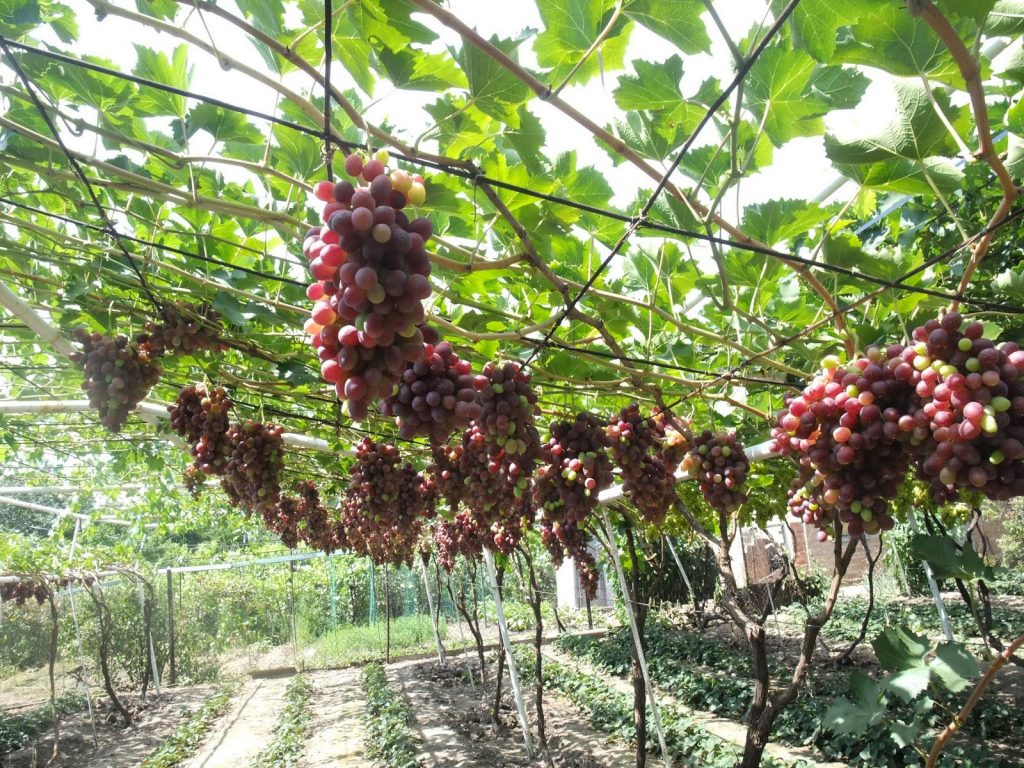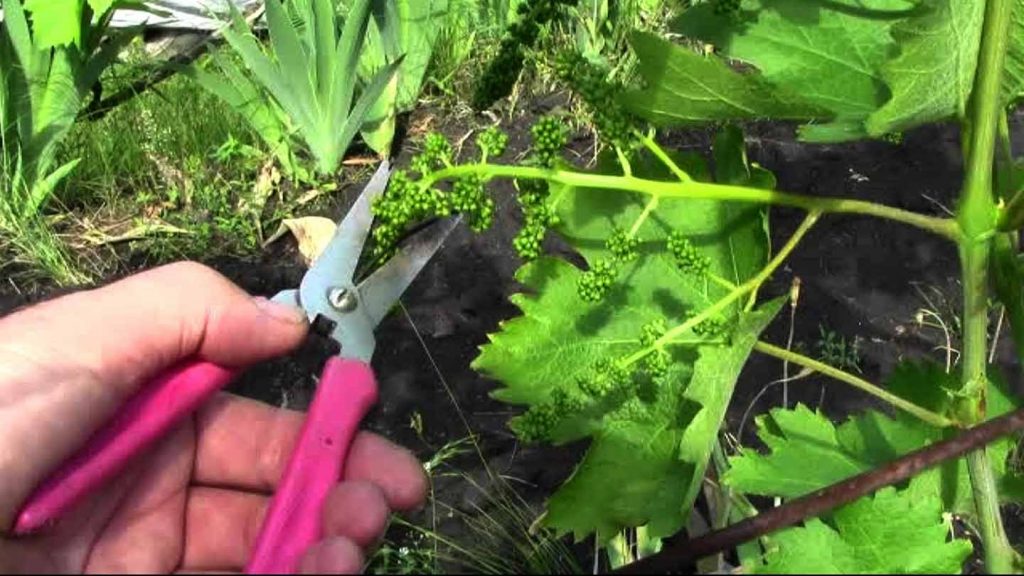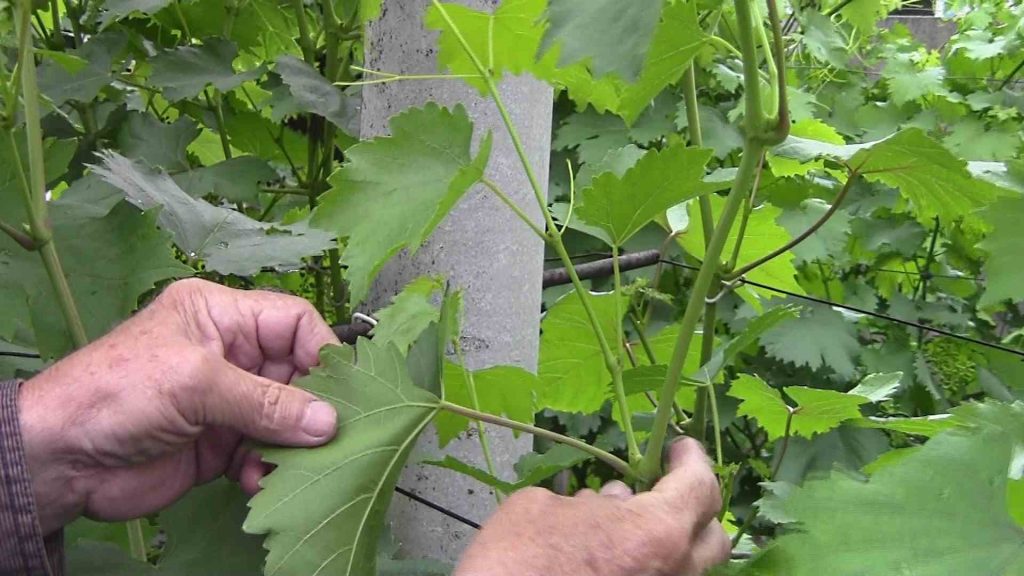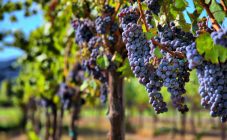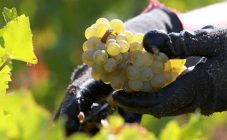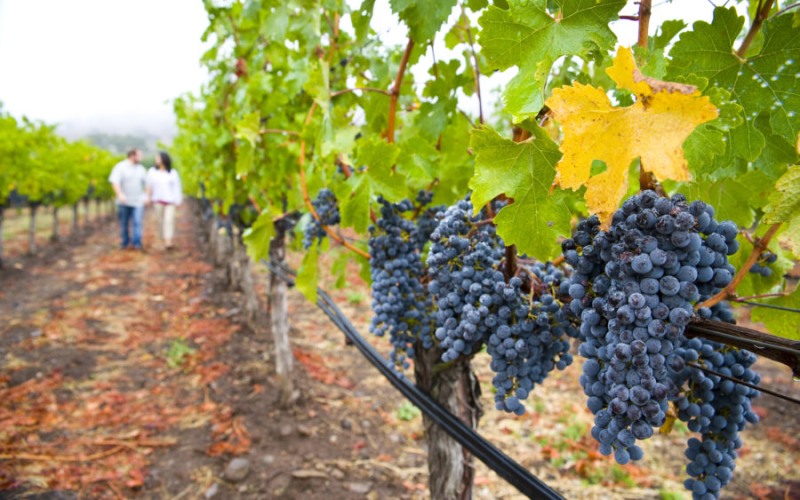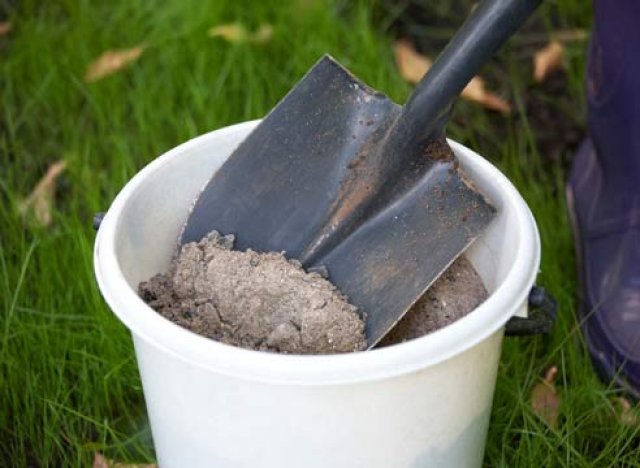Content:
According to its biological characteristics, grapes are a crop with enhanced vegetative growth. To get large clusters that will accumulate a lot of sugar, the plants must be constantly pruned and broken off. The most important operation is shaping. Fragment, pinching and chasing allow it to be maintained, maintain a balance between vegetative growth and fruiting, and restrain the growing water consumption of the crop. The article will discuss each of the operations.
Basic principles of forming grapes
Shaping the bush is necessary to preserve and maintain the growth and development of fruit buds on the vines, and in the future bunches, to remove excess shoots, to ensure plant ventilation, longevity and high productivity of the bushes, and to protect them from diseases caused by microscopic fungi.
When choosing a formation, the following factors are taken into account:
- growing region - covering or non-covering area;
- shrub planting scheme;
- the planned type of trellis for tying bushes;
- irrigation method.
In the southern regions, where bushes are not sheltered for the winter, it is permissible to hang them on a high trunk, leaving very long sleeves of 1.8 m or more.In the northern regions with severe and little snowy winters, they tend to create squat bushes with sleeves no more than 1.2 m.
In accordance with this, landing schemes are chosen:
- in the south: between the rows 2.5-3.0 m, between the bushes - 2.0-2.5 m;
- in the north: between rows 2.3-2.5 m, between bushes 1.2-1.5 m.
The type of trellis is selected based on the accepted technologies of viticulture in the growing area:
- one-plane;
- two-plane;
- L-shaped;
- Don bowl.
Each trellis requires its own bush shape, number and length of sleeves, but the methods for their implementation are the same and consist of a set of operations with a bush. Forming methods:
- spring and autumn pruning of perennial parts of the bush and fruiting shoots;
- a fragment of grapes;
- pinching the tops before flowering;
- pinching;
- increment chasing together with pinning.
Novice growers are advised to comprehend the basics of science from the beginning of the growing season. And the main operation at this time is the spring fragment of grape shoots. Then, after going through the whole range of work with the bush, it will become clearer what load the plant can carry for the next year and how many buds can be left on the vines in the fall.
A piece of grapes before and after flowering
After opening the grape bush in spring, it is tied to a trellis. This work is important to do before bud break.
The opening of eyes in the regions occurs in different ways, but basically by the middle of May, all the buds, if they have not suffered from frost, open up. At this time, an early spring wreck is held. It is necessary to remove new shoots at the bottom of the bush on perennial branches, as well as on vines, where shoots are formed next to the central one, the so-called "doubles" and "tees".
Young grapes tolerate the removal of excess shoots calmly. The procedure is carried out at the bottom of the bush, all buds are removed to the height of the main stem. It can be from 30 to 160 cm.In the covering area, stems with a height of 30-40 cm are left.
The removal of shoots before flowering is associated with the rationing of the number of bunches and the yield. The procedure is carried out at the moment the inflorescences appear. A certain number of bunches must be left.
The calculation is carried out as follows:
- count the total number of eyes left on the bush;
- the total number of grape shoots is multiplied by 0.75.
So, if the pruning of the bush was performed for 30 eyes, then this plant this year can provide at least 23 bunches of nutrients. If the plant is seriously affected by frost, the number of bunches is reduced to a few pieces, allowing the bush to recover from damage.
From the end of May to the first ten days of June, the flowering phase begins in most regions. 3-4 days before the flower caps fall off, you need to pinch the tops of fruiting shoots. Manually pick off 1.5-2.5 cm of the growing part of the shoot with bunches. This is necessary to ensure better berry setting, as more nutrients enter the bunch after the pinching.
After flowering, you need to carefully examine the vineyard and evaluate two points:
- how the berries were tied;
- what is the growth rate of shoots this year.
On the basis of the data obtained, a decision is made on which shoots to remove from the grapes.
If the ovary is good, without peas, then on shoots where there is more than one bunch, the upper ovary must be removed. If the clusters are loose, then 2 brushes can be left on highly developed shoots. Strong shoots without bunches should not be broken off, since they provide the berries with plastic substances for growth, only underdeveloped vines need to be removed.
Summer grapes
During the summer, the development of the future harvest is closely monitored. The vines, as they grow, are tied to the trellis corresponding to the wire.
In the axils of the leaves, shoots of the second order are formed - stepchildren. They are allowed to grow 3-4 sheets, and then break off over the first or second sheet. You do not need to strive to remove all the stepsons and do it too often, as this can provoke the growth of axillary buds with tassels, and the harvest of next year will be lost.
In addition, it is worth considering some nuances:
- Often the disease of grapes with powdery mildew begins with bunches. Diseased brushes with bluish-black spots must be removed, the bush must be treated with a fungicide in the hope of saving the remaining crop.
- Removing green shoots on a young grape bush at the end of July promotes better maturation of the vines and the beginning of their preparation for winter. Of all the developed shoots, you need to leave 4-5, no more.
- In late July - early August, the tops are minted at the level of the upper wire. Too long stepchildren shorten. It is inappropriate to repeat the minting at the end of August.
Instructions for breaking grapes for beginners
It is important for beginners to remember that the current and future harvest of berries depends on the correct fragments. Removing extra bunches on grapes is not only a guarantee of high-quality fruits, but also directly affects the long-term productivity of the bush, so there is no need to spare the brush.
Step by step instructions for the wreck:
- In May, after tying the vines to the trellises, remove the developing shoots from the trunk, "doubles" and "tees".
- Before flowering, break off the extra bunches, weak shoots, and later pinch the vines over the bunches.
- After flowering, perform a second piece of extra bunches, leaving only the lower brushes on the vines.
- In the third decade of July, carry out pinching and chasing.
Gardeners should not spare any effort; on the contrary, they need to be patient in working with the vine, and it will certainly give a generous harvest!
